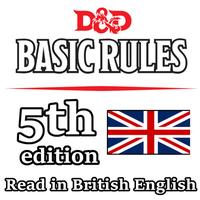Adventures
The Dungeons & Dragons game consists of a group of characters embarking on an adventure that the Dungeon Master presents to them. Each character brings particular capabilities to the adventure in the form of ability scores and skills, class features, racial traits, equipment, and magic items. Every character is different, with various strengths and weaknesses, so the best party of adventurers is one in which the characters complement each other and cover the weaknesses of their companions. The adventurers must cooperate to successfully complete the adventure.
The adventure is the heart of the game, a story with a beginning, a middle, and an end. An adventure might be created by the Dungeon Master or purchased off the shelf, tweaked and modified to suit the DM's needs and desires. In either case, an adventure features a fantastic setting, whether it's an underground dungeon, a crumbling castle, a stretch of wilderness, or a bustling city. It features a rich cast of characters: the adventurers created and played by the other players at the table, as well as nonplayer characters (NPCs). Those characters might be patrons, allies, enemies, hirelings, or just background extras in an adventure. Often, one of the NPCs is a villain whose agenda drives much of an adventure's action. Over the course of their adventures, the characters are confronted by a variety of creatures, objects, and situations that they must deal with in some way. Sometimes the adventurers and other creatures do their best to kill or capture each other in combat. At other times, the adventurers talk to another creature (or even a magical object) with a goal in mind. And often, the adventurers spend time trying to solve a puzzle, bypass an obstacle, find something hidden, or unravel the current situation. Meanwhile, the adventurers explore the world, making decisions about which way to travel and what they'll try to do next. Adventures vary in length and complexity. A short adventure might present only a few challenges, and it might take no more than a single game session to complete. A long adventure can involve hundreds of combats, interactions, and other challenges, and take dozens of sessions to play through, stretching over weeks or months of real time. Usually, the end of an adventure is marked by the adventurers heading back to civilization to rest and enjoy the spoils of their labors.
But that's not the end of the story. You can think of an adventure as a single episode of a TV series, made up of multiple exciting scenes. A campaign is the whole series—a string of adventures joined together, with a consistent group of adventurers following the narrative from start to finish.

